The central suburb's crime stats - which cops woke up to only recently - have been on the rise since the early 80s, residents say, thanks to authorities turning a blind eye
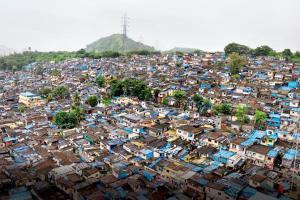
Pics/Rajesh Gupta
Not very long ago, Bhandup was seen as just another nondescript neighbourhood in the eastern suburbs of Mumbai, which was home to the burgeoning middle class. This was before it earned the notorious reputation of becoming the city's new gangland, this year.
ADVERTISEMENT
Since March, the township has witnessed eight murders, over 10 attempt to murder cases and hundreds of incidents of assault, forcing the city's top police brass to act against inefficient officers within its force - Senior Police Inspector Shrinivas Panhale was shunted to the Local Arms division - and crack its whip on criminals in the area. But the story of the making of this crime hub, where youngsters between 16 and 25 years of age have been unleashing terror, runs deep.
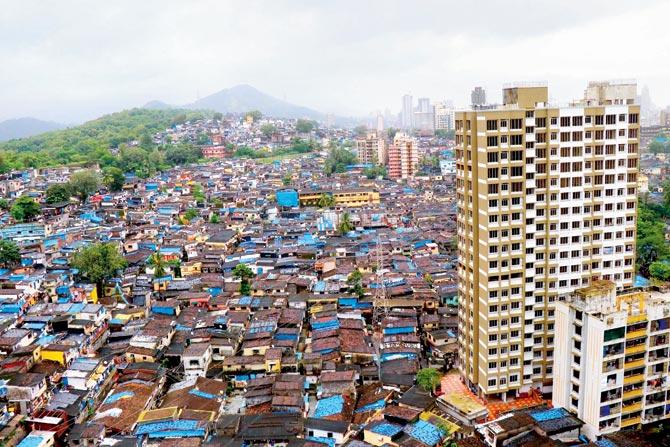
A majority of Bhandup's population resides in hutments. Pics/Rajesh Gupta
The suburban hooch hub
Yashwant Gawand, a social worker and resident of Bhandup for the last 50 years, said that when his grandfather moved here right after Independence from the Konkan region of Maharashtra, the eastern part of the township was full of salt pans. "Bhandup West was surrounded by dense forests, and the Boribunder-Thane local used to run through it," he said. The forest and marshy patches naturally lent itself for illegal activity, and like Antop Hill, Bhandup became the centre for brewing hooch liquor.
The population in the township was also clearly marked - the east side of Bhandup comprised the original inhabitants of the region, members of the Koli and Agri community. "The west was the home for migrants from South India and Konkan regions, some of whom worked in these hooch distilleries," said Gawand.
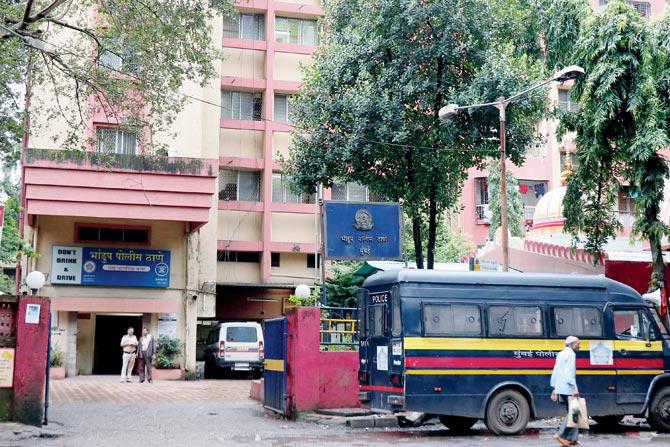
Post 1950, when the boundaries of the Municipal Corporation of Greater Bombay (MCGM) were extended, Bhandup, for the first time, was recognised as part of the city's eastern suburb. Soon after its inclusion in the MCGM, value of land in the belt escalated. "We came here from Kerala in 1960. At the time, there were only hutments in Bhandup. We started a South Indian hotel, which immediately became a hit, as most of the residents hailed from that region," said Gangadhar TM, owner of Muruguan Stores. While Gangadhar remembers the area as being the hub for hooch, he says there were no gangsters or goons yet. "It was a peaceful neighbourhood," he said.
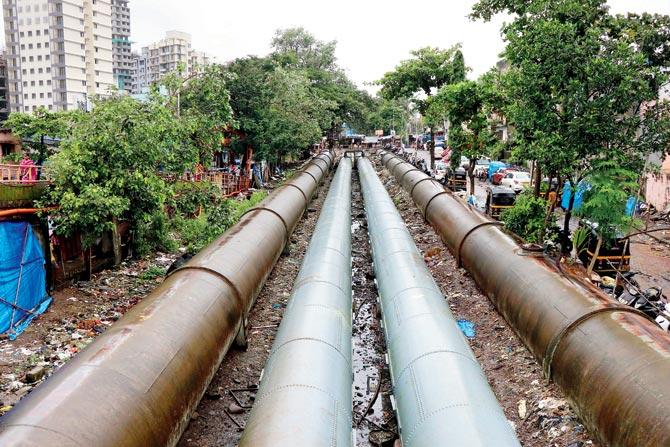
Bhandup is a key supplier of ganja to the entire city, with peddlers operating near water pipelines
Rise of the zopadpatti dada
In the early 80s, when mills in Lalbaug and Chinchpokli started shuttering, many mill workers, who couldn't afford to stay in the central suburbs, bought homes in Bhandup. "Several new residential pockets, including Kokan Nagar, Tembhi Pada, Hanuman Nagar, Hanuman Tekdi, Ram Nagar, Rawte Compound, Tanaji Wadi, Shivneri Nagar, were established by 1985," said Ramesh Khanvilkar, a prominent educationist from Bhandup, who runs a BEd college in the region. "Suddenly, hutments became expensive, and were being sold for anywhere between Rs 20,000 and Rs 30,000," Khanvilkar said.
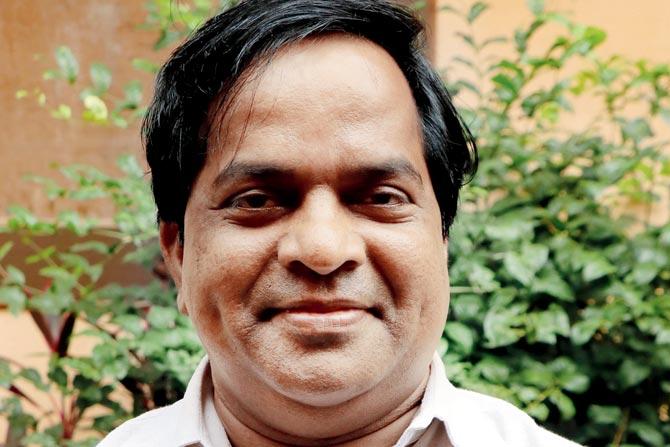
Ramesh Khanvilkar, Educationist
It's around this time that the township saw its tryst with "goondaism" - the zopadpatti dada, also known as the slum lords. "The dada would illegally sell empty plots to people, who would build hutments, and were expected to cough up monthly rents. The slum lords were also responsible for other illegal activities like setting up of country liquor shops, gambling centres and prostitution rackets," Khanvilkar added. Sonapur, a red light pocket, comprising 50-odd houses, came up during the same time. "This is when the plot for the city's new gangland was actually set," Khanvilkar remarked.
D-gang makes inroads
According to a senior police official, Kim Bahadur Thapa, who was the D-company's strong arm, moved to Bhandup in the late 80s. Immediately after shifting here, Thapa took the plunge into politics, contesting the municipal elections with a Shiv Sena ticket, and becoming the corporator of Bh-andup. "Thapa's arrival spawned more goons in the area. Ganja smoking was rampant among these thugs," said a senior police official.
Criminal activity took a beating, when Thapa was gunned down by members of Chhota Rajan's gang in Bhandup. "After Thapa's murder, there was peace in the area for almost 10 years. But, new troubles started brewing. While gang activities reduced, illegal encroachments increased," said a resident.
Meanwhile, gangsters May-ur Shinde, Kanya Santya and Amit Bhogle, became a cause of worry. "The trio was desperate to get hold of the area. All of them had strong political backing and wanted to start their own gang," said a police officer, who was previously posted in Bhandup.
"By early 2000, violence hit its peak as the three gangsters started overpowering each other. More money, drugs and liquor were being pumped in," added the officer. "With the coming in of SRA projects, the gangsters found ways of minting money as 'material suppliers', and builders were threatened to give contracts to them," said the officer. Many youngsters from poor households were lured into joining these gangs.
A senior official said that cops too, were hand-in-glove with these criminals, and hence, they enjoyed a free run for nearly two decades. Bhandup's degeneration only came to light only this year, when criminal activities hit a record high. "Bhandup is the main supplier of ganja to the entire city. The area near the water pipelines is, in fact, a hub for peddlers. This is well known, but one can't understand why cops ignored it," said another cop, who served in the area. The official said that unlike other areas in the city, rigorous patrolling and combing operations didn't take place here. "Beat chowkies have also shut down here," the cop said.
Even as the Mumbai Police have formulated a five-point plan to weed out crime from the zone, a senior officer cautioned that other areas in the city were also going the Bhandup way. The officer identified Wadala TT, Antop Hill and Malwani as sensitive pockets that need to be looked into at the earliest. "In all these areas, cases of molestation and robberies are currently rampant. Hutments are also getting razed and making way for SRA projects, attracting local goons. If these areas are not kept under security and surveillance, we could see a repeat of Bhandup again."
The distillery estate
The earliest records of Bhandup date back to 1803. The Gazetteer of the Bombay Presidency shows that the erstwhile Bhandup estate comprised Bhandup, Nahur and Kanjurmarg and served as a distillery that supplied rum to the government. "In 1803, on payment of a quit-rent, the East India Company granted the major part of Bhandup and parts of two other villages to Luke Ashburner, alderman of Bombay and editor of the Bombay Courier. In 1817, Ashburner sold the estate, together with the contract for supplying the government rum, to his manager Kavasji Mankeji for a sum of *50,000 (R5 lakh). In 1832, machinery was brought from England to work the distillery, and in that year, about 100,000 gallons of rum are said to have been supplied to the government," an excerpt from the Gazetteer reads.
What was missing in Bhandup
- Rigorous patrolling
- Beat chowkies
- Combing operations
- No communication between residents and cops
- Lack of political will
- Rampant illegal encroachments
Also Read: Mumbai: How Bhandup Cops Are Beating Crime With Police Chowkies
Catch up on all the latest Mumbai news, crime news, current affairs, and also a complete guide on Mumbai from food to things to do and events across the city here. Also download the new mid-day Android and iOS apps to get latest updates
 Subscribe today by clicking the link and stay updated with the latest news!" Click here!
Subscribe today by clicking the link and stay updated with the latest news!" Click here!






